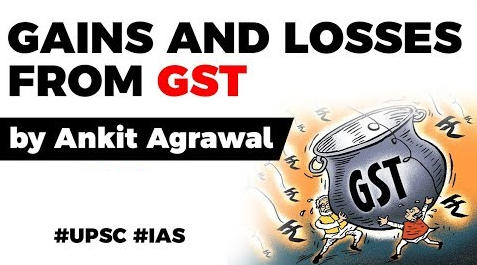Table of Contents

- GST is a uniform tax which is levied on all goods and services to put an end to these problems.
LAUNCH OF GST
- The GST was launched at midnight on 1 July 2017.
- The tax has been evolving over the last 27 months.
- Since the roll-out of the tax, there have been 37 meetings of the GST Council addressing changes in the structure and operations.
- This is a good time to analyse the revenue implications and economic impact of GST, As well as identify the reform areas to increase revenue productivity and minimize administrative, compliance and distortion costs.
GAINS ACHIEVED FROM GST
- The most important gain is from the abolition of interstate check-posts erected to enforce taxes on cross-border transactions.

- This has reduced the impediments to the interstate movement of goods, and helps to create a national common market.
- It is estimated that the long-distance travel time for goods transportation has reduced by almost 20%.
- The reform has also improved supply- chain management and it is no longer necessary to create branch offices merely to avoid interstate sales tax.
- The abolition of interstate sales tax has made the tax destination-based and reduced inequitable interstate tax exportation.
- A major gain is the reduced cascading due to more comprehensive mechanism to credit input taxes against taxes on outputs.
- Earlier, the central excise duty was levied at the manufacturing stage and it cascaded into the final retail value.
- Besides, there was no systematic mechanism for providing input tax credit between excise duty and service taxes.
- Finally, the creation of GST Council is an important innovation in cooperative federalism.
- This has helped to minimize the transaction cost of reforming the calibration of domestic consumption taxes of the Centre and states.

SHORTCOMINGS OF GST
- There are large list of exemptions, multiplicity of rates and exclusion of several items of consumption from the base.
- All this has resulted in erosion of the base and continued distortions.
- The decision to exempt almost 50% of the items in the Consumer Price Index basket has narrowed the base.

- The tax is levied at four different rates (at 5%, 12%, 18% and 28%)
- In addition, special rates on precious metals (0.25%), gold (3%), automobiles etc.
- Multiplicity of tax rates enhances administration & compliance costs.
- Moreover, high tax rates on automobiles, and building and construction material at a time when demand conditions are compressed has caused further slowdown in these sectors.
IMPORTANT OBSERVATIONS OF CAG REPORT
- “Post implementation of GST, the Centre’s revenue from goods and services registered a decline of 10% in 2017/18, compared to the revenue from the subsumed taxes in 2016/17.”

- The Budget Estimate for 2018-19 for the Central government was ₹7.43 trillion—the actual collection was 22% lower at ₹5.81 trillion.
- In 2019-20, while the estimated monthly collection of GST is ₹1.18 trillion, the average monthly collection during the last seven months has been less than ₹1 trillion.
- The government is thus staring at a shortfall of ₹2 trillion for the whole year.























 WhatsApp
WhatsApp